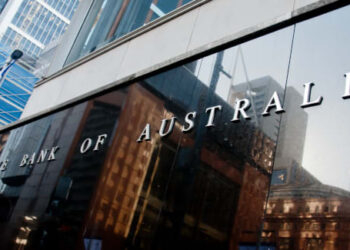New figures from researchers DEXX&R found a 6.1 per cent drop to $2.4 billion in total annual premiums in individual and group risk sales, on the back of a 31.5 per cent drop in new business in the group risk sector, down to $678 million. Only two of the top five companies, OnePath and MLC, recorded an increase in new business.
DEXX&R managing director Mark Kachor told InvestorDaily group in force business actually continues to increase, however “this is a particularly slow quarter”.
“It’s the way that premiums are counted for, primarily for industry super funds. It’s a typically cyclical pattern,” he said.
The market is also “lumpier” and due to the timing of large premium payments by group policy holders such as industry funds, significant fluctuations can occur between quarters, he added.
March is typically the worst year-end point and the new data is “no indication the wheels are coming off”, Mr Kachor said. However, he did raise concerns over profitability in the sector.
“Companies, can’t continue at this level … there’s no doubt that for some of the big schemes, profitability is a big issue for the insurer. Premiums are going to be firm, but equally there was intense competition to get some of these [industry fund] schemes,” he said.
Insurers may need to consider whether they cut their premiums too far to win some of those schemes.
“We’re seeing an intensely competitive market where quoting is cut to the bone. In that area I’d expect [some] increase in margins to return some areas to profitability. You might see renewal premiums increase and new pricing [levels],” he said.
In-force group risk premiums, however, increased by 11.0 per cent to $3.7 billion over the period, AIA up 12.9 per cent to $984 million and TAL recording a 14.3 per cent increase to $797 million.
Individual lump sum risk (death, TPD and trauma benefits) business increased 12.2 per cent to $1.3 billion in the 12 months to March 2013 with CommInsure (22.2 per cent), Westpac (33.2 per cent), Macquarie Life (34.4 per cent) and AIA (46.8 per cent from a lower base) recording significant increases.
In-force individual lump sum business increased 10.0 per cent to $5.4 billion as at 31 March, according to DEXX&R.
TAL (up 10.5 per cent to $582 million), Westpac (up 14.4 per cent to $438 million), AIA (up 25.5 per cent to $216 million), Zurich (up 10.3 per cent to $197 million) and Macquarie (up 24.3 per cent to $99 million) were the notable performers.
Mr Kachor said individual lump sum business had been fairly stable compared to the group market, with most companies going forward. The strong Westpac performance had been helped by the group adding BT Life to its various wrap products, he added.
However, the disability market has been “a bit flat”, he said. Total new disability premiums increased by 5.2 per cent to $443 million, and disability in-force business increased by 9.3 per cent to $2.0 billion.
“Disability is much more cyclical than the lump sum market. You’re also selling into primarily the self-employed and professionals, so maybe it’s harder to upgrade and increase the amount of cover being sold,” he said.
Ten companies recorded an increase greater than the market average, including TAL with a 20.9 per cent increase to $62 million, Westpac with an increase of 50.5 per cent to $42 million, AIA Australia with a 20.5 per cent increase to $24 million, Macquarie was up 32.2 per cent to $16 million and Zurich was up 7.5 per cent to $9 million.
Companies to increase their in-force disability business included OnePath (up 12.8 per cent to $251 million), TAL (up 18.1 per cent to $201 million), AIA Australia (up 18.7 per cent to $114 million), Westpac (up 34.3 per cent to $103 million) and Macquarie (up 22.9 per cent to $48 million).







